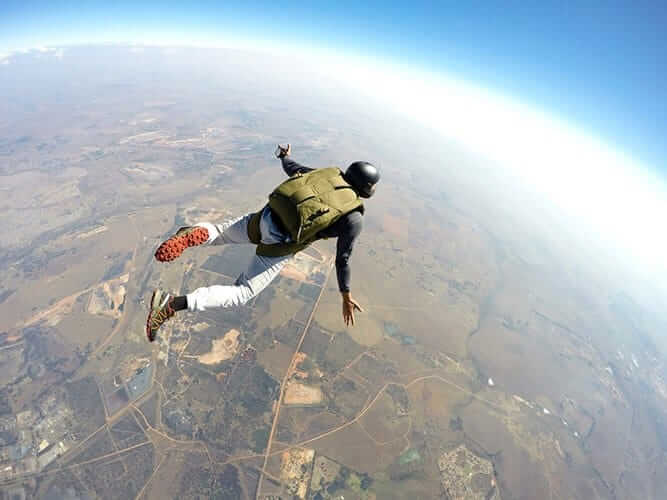
START YOUR FREE CONSULTATION
NO FEES UNLESS WE WIN!
Participating in dangerous activities can be an exciting adrenaline rush. Activities like riding roller coasters, going to trampoline parks, and sky diving are fun, but also inherently dangerous. If a person sustains injuries when participating in these types of activities, their ability to recover damages can become legally complicated.
Nevada law has a lot to say about whether someone can face liability when a person gets hurt participating in a dangerous activity. It’s important to gain a better understanding of the legal theory surrounding the assumption of risk, so you are protected if you participate in an activity that’s considered dangerous. Here’s what you need to know about the assumption of risk in personal injury.
Call (702) 382-0000 for a free consultation
Assumption of the Risk
“Assumption of the risk” is a legal concept that might apply when a person gets hurt during a dangerous activity. It’s the idea that a person knows what the risks are when they choose to do something dangerous.
When assumption of the risk applies, it prevents the injured party from holding someone else accountable for their injuries, because they knew what the dangers were when they chose to participate in the activity.
Express Assumption of the Risk

When a person signs a waiver before participating in a dangerous activity, it’s called “express assumption of the risk.” In that case, the person taking part in the activity expressly acknowledges that they are aware of the potential hazard. The individual will usually sign a liability waiver which states that they agree to participate in the activity despite its known risks. Even if you sign an express assumption of the risk agreement, you can still sue under some circumstances.
An example of an express assumption of the risk is a waiver that a person signs before they use a gym. The waiver usually says that the user acknowledges that using gym equipment is a dangerous activity. When the person signs it, they agree that they’re assuming the chance that they can get hurt at the gym.
Even so, there are some situations where you can still bring a claim even when you sign an express assumption of the risk agreement. In some cases, the person asking you to sign a waiver might expose you to a different risk than you expect. For example, if you sign a waiver at a trampoline park, the park owner might leave a trampoline with frayed netting and exposed springs. If you’re hurt, you might still be able to recover, because the risk you agreed to is not the risk that the other person exposes you to.
Implied Assumption of the Risk
“Implied assumption of the risk” applies when a person knowingly participates in a dangerous activity. Although no written or verbal agreement has been made, a person knows that there is a risk, and decides to take part in the event anyway.
For example, most people know that playing softball can be a hazardous activity. Even though they don’t sign a waiver, in most cases, just picking up the bat and ball to join in the game creates an assumption that the person participating knows that there is a chance they may be injured.
Primary Implied Assumption of the Risk
When “primary assumption of the risk” applies, a person accepts the risk knowing that the others involved have no duty for their safety. An example of this is when a person attends a sporting event.
If a foul ball comes your way, you can’t bring a claim for your injuries, because you knew it was a possibility when you chose to attend the game. Usually, primary assumption of the risk ultimately stops a victim recovering for their losses.
Secondary Implied Assumption of the Risk
When “secondary assumption of the risk” applies, the other party owes a duty of care to the person who participates in the activity, but the participating individual knows the risk and accepts it voluntarily. For example, an individual who chooses to go bungee jumping knows that it’s a dangerous activity.
Even so, the company that the person hires to go bungee jumping still owes a duty of care to the individual who participates. When secondary implied assumption of the risk applies, a victim may still have a claim for recovery when they get hurt because of someone else’s negligence or intentional act.
Modified Comparative Negligence
In cases where the other party owes you a duty, comparative negligence may apply to allow you a partial recovery even if you accept some risk. In that case, the jury looks at the entire case.
They compare the other person’s negligence against the risk that you assume. The jury decides what’s fair and what you should be able to recover for your injuries.
It’s an Affirmative Defense
In Nevada negligence law, assumption of the risk is what’s called an affirmative defense. That means it’s something that the defense has to raise in response to the claim against them. This type of argument is one that introduces evidence that will negate liability, even if negligence is proven.
If they raise it as a defense, it’s up to them to prove to the jury that you assumed the risk. Ultimately, the jury decides these questions of fact, including whether you assumed the risk.
Assumption of the Risk May Be Void for Public Policy
In some cases, you can’t assume risk. This consideration applies to emergency medical services, and mandatory public education. You also can’t assume the risk for an intentional act. That is, even if you sign a waiver, another person can’t do things to hurt you on purpose.
For example, if you sign a waiver to jump in a trampoline park, the owner can’t place a sharp object under your trampoline to hurt you on purpose. If they do, you can still bring a claim. You must also have the capacity to consent. This might apply in a case where the injured person is a minor who can’t legally sign a waiver or appreciate the risks involved in the activity.
Help From an Attorney
The assumption of risk is just one of the legal issues and questions that might come up in your personal injury case. A skilled injury attorney in Las Vegas can help evaluate your case to see if the assumption of risk applies.
Your attorney can help you explore whether the assumption of risk prevents you from bringing a successful case for recovery. They can also help you identify other important issues in your case, and provide an expert opinion on these matters. Schedule your free consultation with an attorney that can help you take the right steps to prepare your case for the best recovery possible.
Call (702) 382-0000 for a free consultation
Adam S. Kutner is a top 100 trial lawyer with 33 years’ experience and expertise that will benefit you
Call us at (702) 382-0000 anytime to schedule a free consultation. We will work to get you the maximum settlement as quickly as possible so you can move forward on your healing journey.
START YOUR FREE CONSULTATION
NO FEES UNLESS WE WIN!
Home visits are available
Call now for details
SE HABLA ESPAÑOL

Adam S. Kutner
PERSONAL INJURY LAWYER
With more than 33 years of experience fighting for victims of personal injury in the Las Vegas Valley, attorney Adam S. Kutner knows his way around the Nevada court system and how to get clients their settlement promptly and trouble-free.














